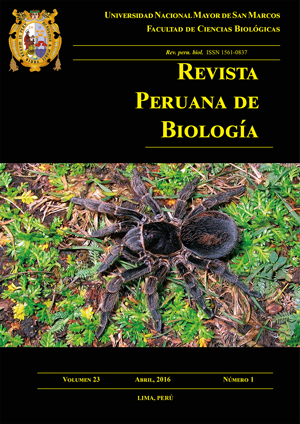Conserving the genetic diversity in Peru: challenges in the implementation of an access and benefit-sharing regime
DOI:
https://doi.org/10.15381/rpb.v23i1.11837Keywords:
ABS, biodiversity, Nagoya Protocol, biotechnology, Peru.Abstract
This essay intends to debate the major challenges that Peru faces as it implements a national regime on Access to genetic resources and Benefit-Sharing (ABS). The ABS encourages the conservation of genetic diversity by means of the fair and equitable distribution of the benefits arisen from the utilization of genetic resources. Distribution is to take place between the providing country and the user of the resources. Peru features four main weaknesses in relation to ABS: (1) Firstly; its national legislation on the topic sets a bureaucratic and complex procedure that hinders the negotiation of fructiferous ABS contracts. (2) The role of the “national scientific partner” has been distorted and true opportunities for scientific cooperation are missed. (3) Peruvian legislation on ABS establishes retroactive effects infringing the principle of legal certainty. (4) Even though the national legal framework establishes a set of compliance measures and a checkpoint to verify the legal access of genetic resources in accordance to the Nagoya Protocol, these measures do not cover the control of genetic resources and traditional knowledge associated to their utilization from countries other than Peru. Improvements to face the challenges encountered are offered at the end of the article.Downloads
Downloads
Published
Issue
Section
License
Copyright (c) 2016 Luciana Carla Silvestri

This work is licensed under a Creative Commons Attribution-NonCommercial-ShareAlike 4.0 International License.
AUTHORS RETAIN THEIR RIGHTS:
a. Authors retain their trade mark rights and patent, and also on any process or procedure described in the article.
b. Authors retain their right to share, copy, distribute, perform and publicly communicate their article (eg, to place their article in an institutional repository or publish it in a book), with an acknowledgment of its initial publication in the Revista Peruana de Biologia.
c. Authors retain theirs right to make a subsequent publication of their work, to use the article or any part thereof (eg a compilation of his papers, lecture notes, thesis, or a book), always indicating its initial publication in the Revista Peruana de Biologia (the originator of the work, journal, volume, number and date).


















